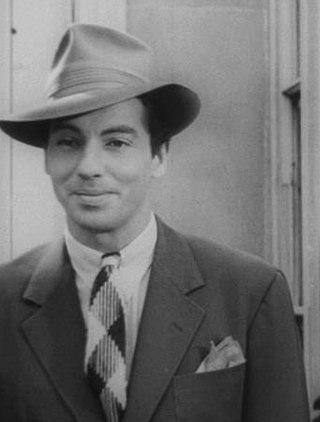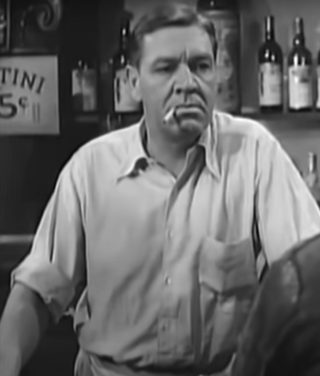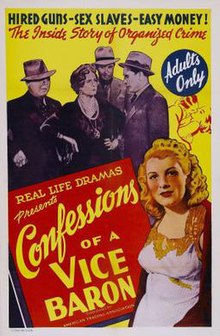
Marc Lawrence was an American character actor who specialized in underworld types. He has also been credited as F. A. Foss, Marc Laurence and Marc C. Lawrence.

Ben Welden was an American character actor who played a wide variety of Damon Runyon-type gangsters in various movies and television shows.

Peter Paul Fix was an American film and television character actor who was best known for his work in Westerns. Fix appeared in more than 100 movies and dozens of television shows over a 56-year career between 1925 and 1981. Fix portrayed Marshal Micah Torrance, opposite Chuck Connors's character in The Rifleman from 1958 to 1963. He later appeared with Connors in the 1966 Western film Ride Beyond Vengeance.

Reed Hadley was an American film, television and radio actor.

Captain Carleton Scott Young was an American character actor who was known for his deep voice.

Seymour "Cy" Schindell was an American actor. He appeared in 37 Three Stooges short subjects, mostly as a heavy, though he was never credited in any Stooge shorts.

Warner Richmond was an American stage and film actor. He began his career as a stock theatre actor and appeared in films in both the silent film and sound eras. His career spanned four decades. He is possibly best recalled for appearances in Westerns in his later career in sound films. Between 1912 and 1946, he appeared in more than 140 films.

Duke York, was an American film actor and stuntman who appeared in nearly 160 films between 1932 and 1952. He was also known as Duke Owl.

Anthony Caruso was an American character actor in more than one hundred American films, usually playing villains and gangsters, including the first season of Walt Disney's Zorro as Captain Juan Ortega.

Richard Michael Wessel was an American film actor who appeared in more than 270 films between 1935 and 1966. He is best remembered for his only leading role, a chilling portrayal of strangler Harry "Cueball" Lake in Dick Tracy vs. Cueball (1946), and for his appearances as comic villains opposite The Three Stooges.

Max Wagner was a Mexican-born American film actor who specialized in playing small parts such as thugs, gangsters, sailors, henchmen, bodyguards, cab drivers and moving men, appearing more than 400 films in his career, most without receiving screen credit. In 1927, he was a leading witness in the well-publicized manslaughter trials of actor Paul Kelly and actress/screenwriter Dorothy Mackaye.
Willis Kent was an independent American film producer, active from 1928 to 1958 under at least three different corporate names.

Bradley Page was an American film actor. He appeared in more than 100 films from 1931 to 1943.

Lucien Prival was an American film actor. He appeared in more than 70 films between 1926 and 1953.

The Wages of Sin is a 1938 American drama film directed by Herman Webber and starring Constance Worth, Willy Castello, Clara Kimball Young, and Blanche Mehaffey. It was produced by Willis Kent. Cheaply made, with poor production values, it is an exploitation film made outside the Hollywood production code, dealing with topics of white slavery, prostitution and murder.

The Kid from Broken Gun is a 1952 American western action film directed by Fred F. Sears, and starring Charles Starrett, Jock Mahoney, Angela Stevens, Tristram Coffin, and Myron Healey. The film was released by Columbia Pictures on August 16, 1952. This film became the 65th and final in the Durango Kid series.

Joe Downing was an American stage, TV and B-movie actor who made more than 70 appearances.
Elliott Sullivan was an American actor.

Smashing the Vice Trust is a 1937 American crime drama film directed by Melville Shyer and starring Willy Castello, Veola Vonn and Selmer Jackson. Marketed as an exploitation film, it was produced and distributed by the Poverty Row studio Willis Kent Productions. Castello later reprised the role for another Kent film Confessions of a Vice Baron (1942).

Willy Castello was a Dutch-American film actor, also sometimes credited as William Castello. While he spent much of his screen career playing supporting roles, he appeared for producer William Kent in several Poverty Row exploitation films.


















